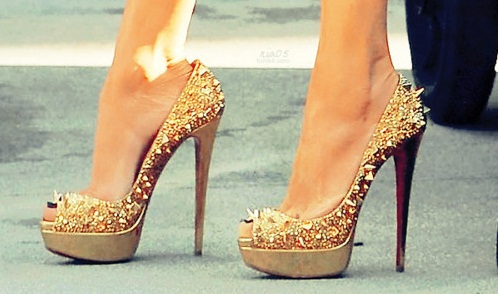One of the biggest issues with shoes is the repetitive strain they can put on our feet, which intern effects our bodies.

Sydney’s Kate McArthur-Jones, Mister Minit’s resident podiatrist, and owner of City Feet Clinic talks to Bondi Beauty about the damage we do to our feet via the shoes we wear:
What style of shoe does the most damage to our bodies?
Thongs are the worst. They reduce certain joints from working and thus causes increased stress on other areas of the foot. You’ve got to think outside the box here – using the same shoe day in day out on concrete will increase repetitive strain.
How much of an effect do the shoes we wear everyday have on our feet?
Women love shoes, we just have no idea what to wear. We tend to find shoes that work with outfits, make our feet look smaller, but we ignore function of the shoe. Poor foot function and/or poor fitting shoes plus concrete can cause great pain, strengthening issues and dropped arches.
I usually see pain (chronic injuries) caused by poor biomechanics and shoe choices, you can do an action a thousand times in a slightly wrong position and something has to give just one time.
Do high heels damage our bodies?
Heels put shift 75% of your body weight onto your forefoot. This action increases force and pressure that will inflame soft tissue and put pressure on bones that can only take so much.
Treat heels like you’re an athlete. When your feet hurt consider this like a back injury, you have overused the forefoot and need to reduce acute inflammation (ice, voltaren gel, Neurofen) then manage by wearing slighter lower heels, rounded toes and straps that hold your foot down to recover over the following day.
Treat heels like you’re an athlete
In an ideal world, how much time should women wear high heels in a week?
Heels should be worn every other day – different heights, widths and toe shapes. Some are more curved than others (Construction of the shoe called a Last) some have a straighter last, which will fit entirely differently.
If you are getting pain in your lower back, hips, knees, lower limbs, ankles or feet…. You probably have poor biomechanics and need some treatment.
How can we tell if the way we walk in our every day or running shoes has an impact on our feet? Can we look at where your shoes wear out for example?
A shoe is designed for a specific reason and will wear out differently if you are not using the shoe correctly (as in wearing a tennis shoe for running).
I prefer to look at the shoe and discuss with my patients about what type of activities and amounts they are doing to determine if the shoe is the correct one for them.
The most common one I get asked is wearing out heels on the outside. We are supposed to wear out our heels on the outside – but there are different degrees. Forefoot wear patterns are indicators but not causes of injuries.
It is a body deference mechanism to force; landing laterally on your heel will reduce force on your legs and hips and will allow you to roll better. This will of course wear out much more on leather or rubber soled shoes because concrete isn’t a forgiving surface. Have the heels replaced regularly at stores like Mister Minit. Depending on wear will change per person.
In terms of running shoes, when is it time to replace them and if running every day, should we alternate different pairs each day?
I have 15yrs experience in running shoes (training, selling, wearing and medical experience).
Shoes change every year and theories move along with the times. I spend a lot of time working with shoe companies, travelling to meet the best researches and broadening my understanding of different shoe fittings for certain injuries and foot conditions to know more.
Shoes need to be changed every 500 to 1000km – If using everyday have 2 pairs, use one and rest one. You should get better life out of the shoe preferably for half marathon and marathon runners.
You should notice large creases either medially or laterally on the midsole of the shoe where the major cushioning and support is. Or if the sole has worn down otherwise would be quite dangerous on wet surfaces.
Given it’s winter, what about socks, how important is it to wear the right socks?
There are different types of socks – cotton, polypropylene, coolmax, merino.
Cotton socks are the most common but hold the most water directly against your feet. I find they will cause more blistering for this reason. Make sure you have a sock with wicking properties – Coolmax and polypropylene are most common. Merino Wool is a great warm sock and stays warm when they get wet.
I like the fact that it wicks moisture to the outer layer of the sock, some of the good brands I refer –Thorlo, Lightfeet, some Asics specific running socks.
Tell us about your favourite pair of shoes?


